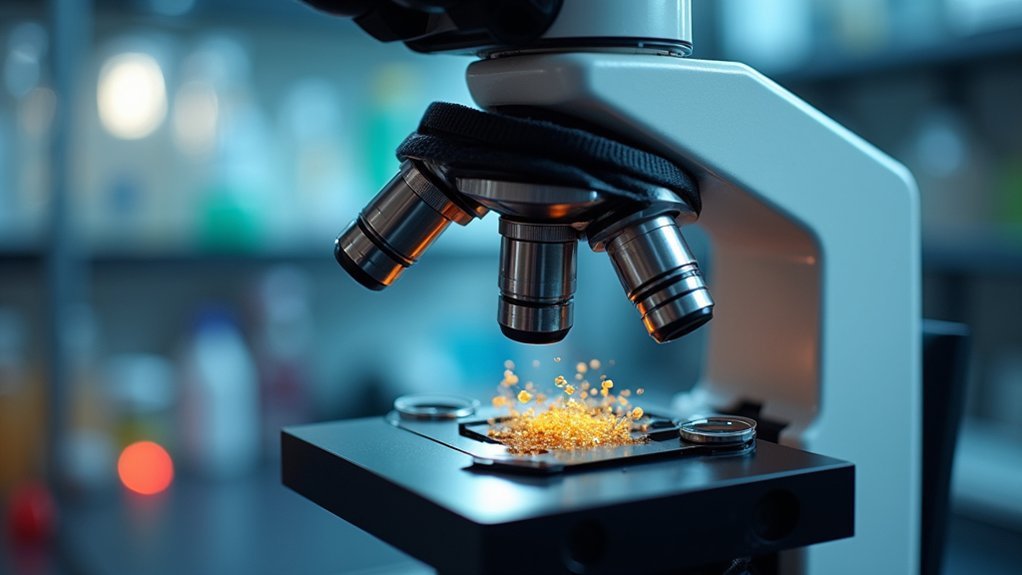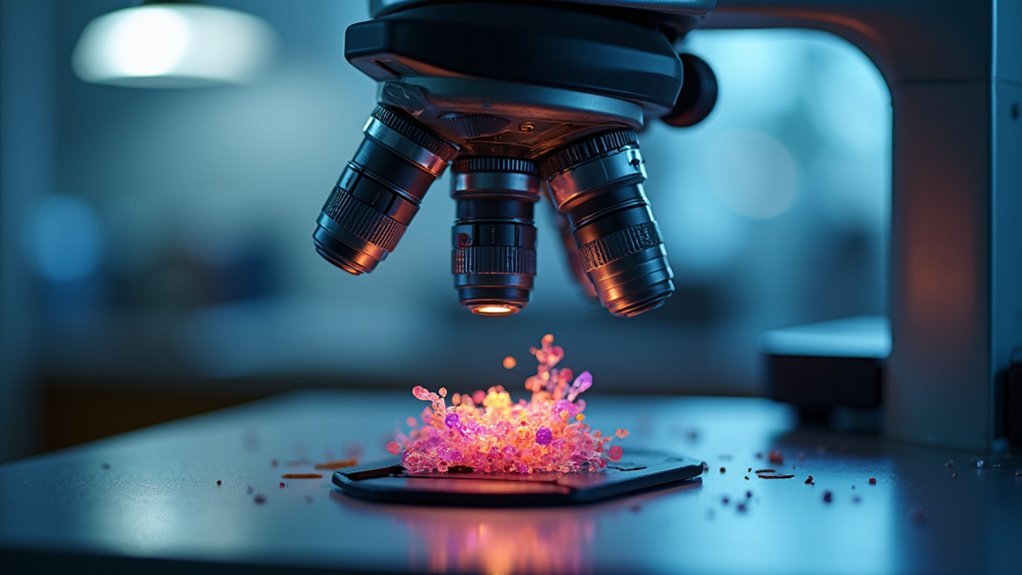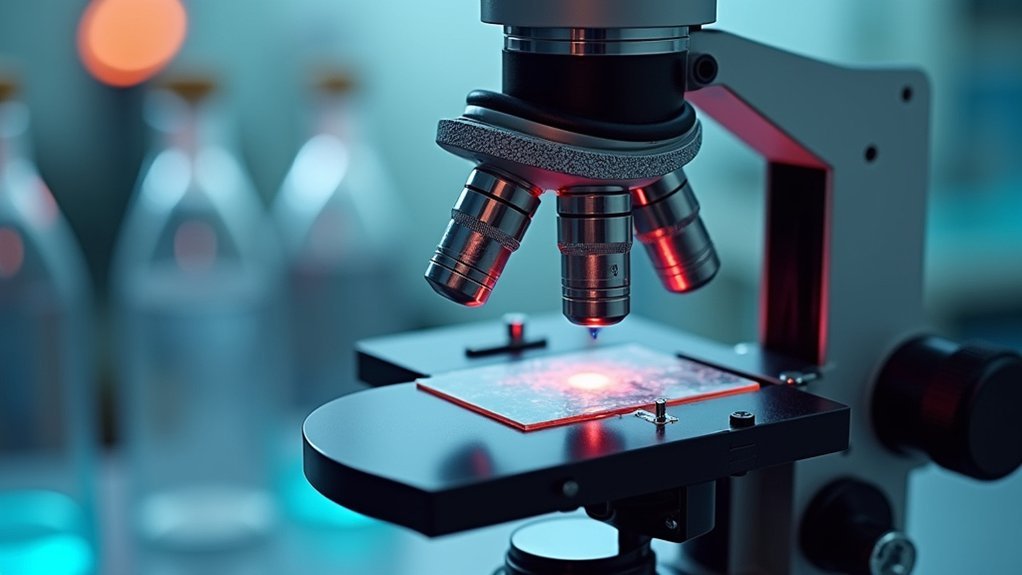For serious laboratory research, three contrast microscopes stand out for their exceptional performance. Nikon Microscopy Systems deliver advanced phase contrast technology with superior image clarity. The Zeiss Axioscope offers premium differential interference contrast capabilities ideal for transparent specimens. Olympus BX53 provides integrated multi-contrast imaging for seamless switching between techniques. Each system combines ergonomic design with high-resolution optics to enhance your visualization capabilities. Discover how these precision instruments can transform your research outcomes.
Nikon Microscopy Systems: Advanced Phase Contrast Technology

Scientists worldwide recognize Nikon’s remarkable contribution to microscopy through their advanced phase contrast technology. You’ll appreciate how these systems enhance visualization of transparent specimens without staining—a critical advantage for biological research.
Nikon’s high-resolution optics and innovative illumination methods deliver exceptional image clarity, allowing you to observe minute details at any focal plane. When examining live cells and tissues, you’ll notice considerably improved contrast that reveals structures otherwise invisible under conventional microscopy.
What sets Nikon apart is their customizable objectives and condenser settings, letting you adapt to various sample types instantly. Their integrated digital imaging capabilities streamline your data capture and analysis workflow.
For both academic and industrial applications, Nikon’s durable, precision-engineered microscopes represent a reliable, long-term investment for your laboratory.
2. Zeiss Axioscope: Premium Differential Interference Contrast Solutions
When evaluating premium differential interference contrast technology, the Zeiss Axioscope stands out as an exceptional investment for researchers requiring unparalleled specimen visualization. Its superior DIC capabilities deliver extraordinary contrast for transparent specimens, even at high magnifications.
You’ll appreciate the modular configuration that allows customization with various objectives and illumination options tailored to your specific research requirements.
The Axioscope’s advanced optics and high-quality glass components guarantee exceptional image clarity and color fidelity during your analyses.
The microscope’s ergonomic design features intuitive controls that reduce fatigue during extended use.
Additionally, Zeiss provides extensive support and training resources, helping you maximize the instrument’s capabilities across diverse scientific applications.
If you’re seeking premium contrast solutions, the Axioscope delivers exceptional value for serious researchers.
3. Olympus BX53: Integrated Multi-Contrast Imaging Capabilities

Three standout features make the Olympus BX53 an exceptional choice for researchers requiring versatile contrast options.
First, its advanced multi-contrast imaging system allows you to seamlessly switch between brightfield, darkfield, and phase contrast techniques, optimizing how light passes through your specimens for enhanced visualization.
Effortlessly transition between contrast modes for optimal specimen visualization with precision-engineered optical pathways.
Second, the BX53’s proprietary UIS2 optical system delivers high-resolution images with an expansive field of view, ensuring you capture every critical detail in your observations.
Finally, the microscope’s ergonomic design with comfortable viewing angles and intuitive controls prevents strain during extended use.
You’ll appreciate the consistent illumination from its LED system and the modular design that accommodates fluorescence attachments. This adaptability makes the BX53 perfect for diverse research applications where contrast flexibility is paramount.
Frequently Asked Questions
What Is the Best Brand of Microscopes?
The “best” microscope brand depends on your needs. Consider Amscope for stereo tasks, Swift for compound quality, Carson for mobility, or Andonstar for digital options. You’ll want to balance price with quality.
Which Microscope Is Best for Home Use?
For home use, you’ll find the Carson MicroBrite perfect at just $20, offering 60-120x magnification. If you’re tech-savvy, try the $40 pluggable digital microscope or use your iPhone 15 Pro’s macro mode.
What Are the Differences Between the 3 Microscopes?
You’ll find these contrast microscopes differ in their illumination techniques: phase contrast reveals living cells without staining, DIC creates 3D-like images using polarized light, and darkfield shows specimens brightly against dark backgrounds.
How Much Should I Pay for a Microscope?
You should pay $40-90 for basic educational use, $90-300 for better quality and features, or $300+ for premium construction with advanced capabilities like HDMI output for serious, long-term projects.
In Summary
When you’re investing in contrast microscopy, you can’t go wrong with these top performers. Nikon delivers cutting-edge phase contrast technology, Zeiss Axioscope offers premium DIC capabilities for research-grade imaging, and Olympus BX53 provides versatile multi-contrast options in one powerful package. Choose based on your specific applications, but rest assured you’ll get exceptional clarity and detail with any of these industry-leading systems.





Leave a Reply